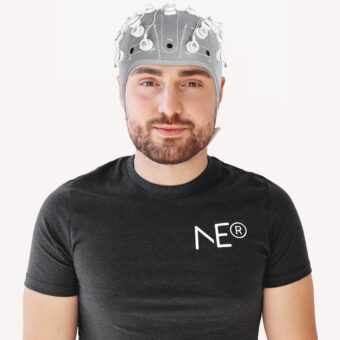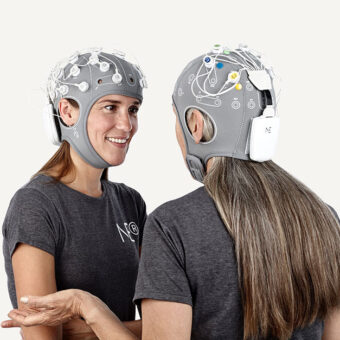Introduction
Advancements in neuroimaging are reshaping how we diagnose and treat psychiatric disorders. The goal of precision psychiatry is to tailor treatments based on each individual’s unique biology, moving beyond the subjective reporting of symptoms. At the heart of this shift are imaging biomarkers—objective measures derived from brain scans—that offer the potential for more personalized, accurate treatment plans.
Among the available techniques, electroencephalography (EEG) and magnetic resonance imaging (MRI) have emerged as leading methods. In this article, we explore the strengths and challenges of these technologies and assess their role in the future of psychiatric care.
What Are Imaging Biomarkers?
Imaging biomarkers are biological indicators captured through neuroimaging, used to assess brain health and function. They provide objective data that can be analyzed to identify patterns associated with psychiatric disorders, offering an alternative to traditional symptom-based diagnosis. In precision psychiatry, these biomarkers could improve treatment by giving clinicians concrete, data-driven insights into a patient’s brain activity or structure.
The ideal imaging biomarker should be:
- Reliable across time and settings
- Sensitive to meaningful changes in brain activity
- Scalable and cost-effective for clinical use
- Informative, providing clear, actionable data for clinicians
EEG vs. MRI: Key Differences in Imaging Biomarkers
Both EEG and MRI are valuable tools for identifying imaging biomarkers in psychiatry. However, they offer distinct advantages that influence their suitability for clinical use.
MRI: A Focus on Structural and Functional Imaging
MRI provides detailed images of brain anatomy and function, with structural MRI (sMRI) mapping the physical structure of the brain and functional MRI (fMRI) tracking blood flow to reveal activity in different regions. MRI has been particularly useful in neurology, where many disorders are tied to visible structural changes.
However, while MRI offers high-resolution images, it hasn’t yet delivered on its promise for psychiatric care. One reason is its reliability: fMRI, which captures brain function, can be less consistent in measuring brain activity over time. This limitation affects its utility in detecting imaging biomarkers that could reliably guide psychiatric treatment. Moreover, MRI is an expensive technology to maintain, which hinders its scalability in routine psychiatric practice.
EEG: A Functional Focus With Greater Flexibility
EEG measures the brain’s electrical activity in real-time, providing highly precise insights into the timing of brain processes. While MRI excels in spatial precision (locating brain activity in specific areas), EEG offers superior temporal precision, capturing rapid changes in brain function that are essential for understanding psychiatric disorders.
The reliability of EEG is one of its key strengths, offering consistent results in detecting functional biomarkers. The technology is also more affordable and portable than MRI, making it an ideal choice for scaling up in clinical environments. EEG has already shown promise in predicting treatment outcomes in conditions like depression and ADHD, highlighting its relevance for precision psychiatry.
Reliability, Practicality, and the Future of Imaging Biomarkers
Reliability is a crucial factor when choosing imaging biomarkers for psychiatric care. Consistent, repeatable results ensure that the biomarkers can be trusted to guide treatment decisions over time. While MRI has shown promise in mapping brain activity, its reliability in psychiatric applications has been a concern. Fluctuating results and the need for larger sample sizes to achieve statistical significance make fMRI less practical in routine clinical settings. In contrast, EEG stands out for its ability to deliver consistent, reliable measurements of brain activity, making it a more dependable tool for monitoring treatment effects and guiding long-term care.
EEG’s reliability, combined with its real-time recording capabilities, positions it as a leading modality for identifying functional biomarkers—those related to brain activity rather than structural abnormalities. Psychiatric disorders often stem from disruptions in how the brain processes information, and EEG is particularly effective in capturing these disruptions. By tracking brain patterns, EEG has been successfully used to predict treatment outcomes for mood disorders, anxiety, and ADHD. Its ability to detect meaningful brain activity changes makes EEG an invaluable tool for precision psychiatry, where personalized treatments are the future of care.
While MRI remains valuable for specific cases like neurodegenerative disorders, its high costs and logistical challenges limit its broader use in psychiatry. In contrast, technologies like our EEG devices are more cost-effective and scalable, offering real-time insights into brain activity. With advancements in portable and wireless systems, EEG can be easily deployed across various settings, making it a practical tool for identifying reliable and clinically relevant imaging biomarkers.
Conclusion: A Clear Path for EEG in Precision Psychiatry
While MRI has historically dominated neuroimaging research, EEG is emerging as a more reliable, cost-effective, and clinically relevant tool for developing psychiatric biomarkers. Its high temporal resolution, coupled with its proven sensitivity to functional changes in brain activity, positions EEG as a front-runner in the race toward precision psychiatry. In the years to come, EEG’s ability to capture fast neural processes and its scalability could make it the go-to modality for psychiatric research and treatment.
References:
Etkin A, Mathalon DH. Bringing Imaging Biomarkers Into Clinical Reality in Psychiatry. JAMA Psychiatry. Published online September 04, 2024. doi:10.1001/jamapsychiatry.2024.2553



